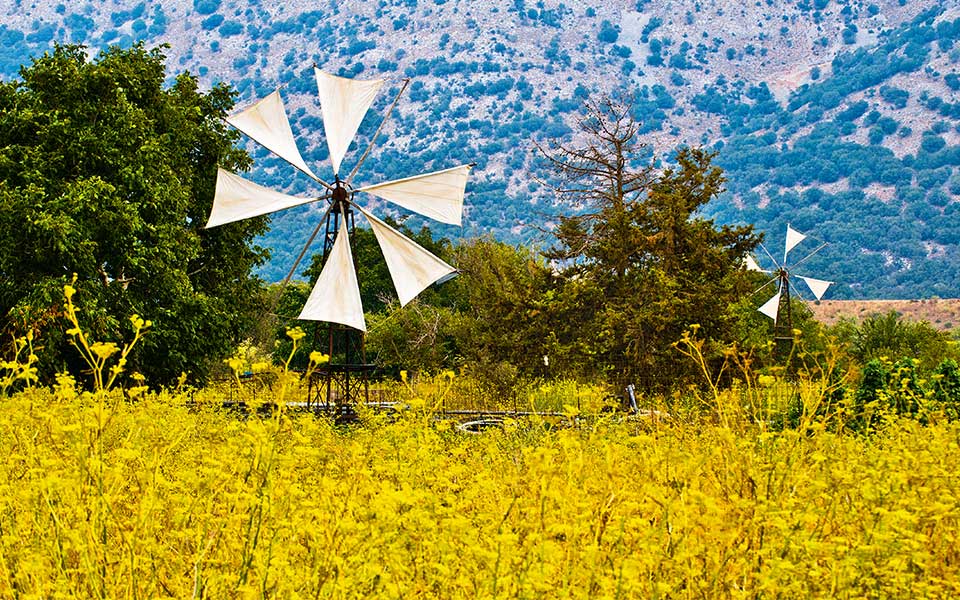I followed the route on the digital map to the letter, left the car at the indicated spot, carried on along the dirt track on foot but never managed to find the entrance that leads to the Kronio, the cave where the mythical Titan Kronos was said to have lived.
In contrast, however, I had no trouble spotting the Dikteon Cave, where Zeus was born, thanks to the throng of tourist coaches in the car park by the entrance.
I smiled. It’s as if a faint echo of the myth in which Zeus destroyed his father, Kronos, and gained total dominion over gods and humans still holds power to the present day. The Kronio is an inaccessible, isolated cave, scarcely ever visited, while the Dikteon is one of the most popular attractions in Lasithi, and the whole of Crete.
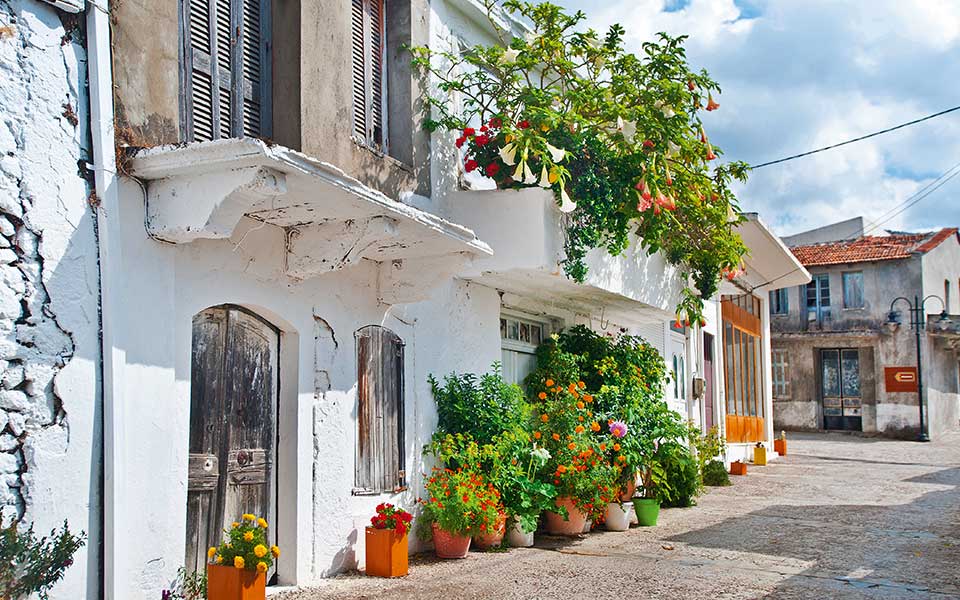
© Clairy Moustafellou
In ancient times, both caves were used as places of habitation, burial and worship. Egyptian scarab figurines have been found at the Kronio (proving the ties between Minoan Crete and ancient Egypt); at the Dikteon, there were votive offerings placed among the stalagmites. Both indicate the importance of the Lasithi Plateau, where they are located. The site where you choose, as a society, to place the birth of the greatest of the gods cannot be arbitrary.
The Lasithi Plateau is the largest plateau in Crete. A fertile inland plain at an elevation of 800 to 850m, bordered by the imposing Dikti Mountains, the plateau is home to more than a dozen villages (Tzermiado, Avrakontes, Aghios Georgios, and Psychro are some of the better known among them). It’s accessible from Malia and from Aghios Nikolaos; the route from the latter is full of twists turns and, as you drive higher, you can even feel the temperature drop.
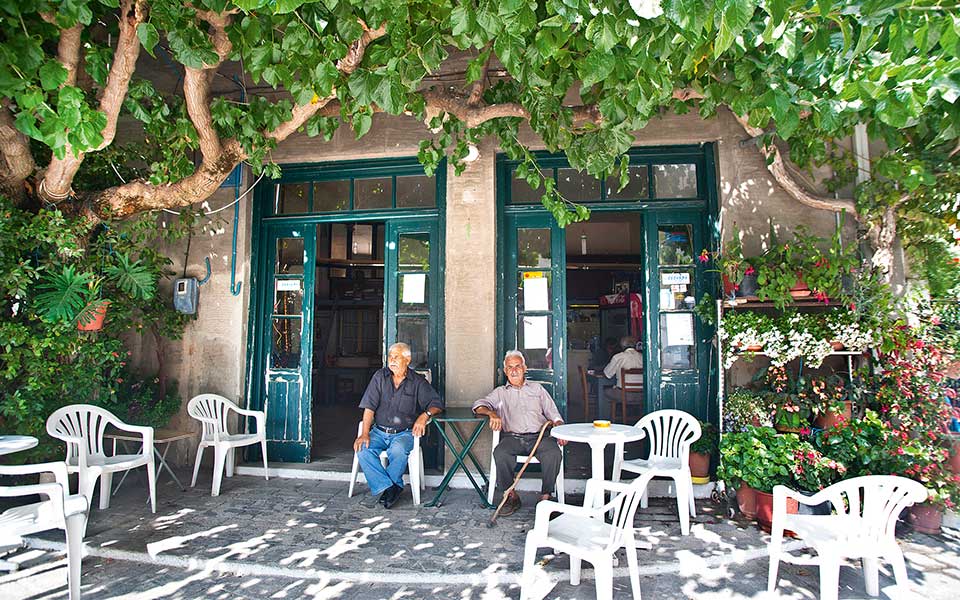
© Clairy Moustafellou
The plateau has its own microclimate, and its own mountain people who are genuinely welcoming and will freely give you anything they have, not because it’s the policy of some all-inclusive hotel, but because it’s simply in their DNA.
When Eleni, who sells Cretan thyme honey door-to-door in Tzermiado, dipped a walnut in the honey and put it in my mouth with her hand, she was reaching out to a stranger. She couldn’t care less whether I bought her honey or not.
Something similar happened with Dimitris, a young farmer whom I met when I strayed off the main road on one of my drives, and ended up outside his field. He welcomed me, we got talking, and just before I left he filled the trunk of my car with lettuces, dill and potatoes. “What will I do with them? I’m not staying in my own house in Crete,” I said, but he refused to let me leave without giving me something to take with me.
There he is, I thought, Xenios (“Welcoming”) Zeus. The god was born on the Lasithi Plateau and he’s never left, even though people stopped believing in him at some point. He still prospers, making his way through eternity, living on inside people like Eleni and Dimitris, for whom hospitality and giving are a way of life.
There were many others, too. I spotted them at cafés where they often sit for hours; as I passed, they invited me to join them for a drink of raki and a handful of roasted chickpeas. They stood in the doorways of shops selling traditional handwoven textiles, and beckoned me inside so they could show me what a handmade embroidered square is, “because you’re young and you won’t know.”
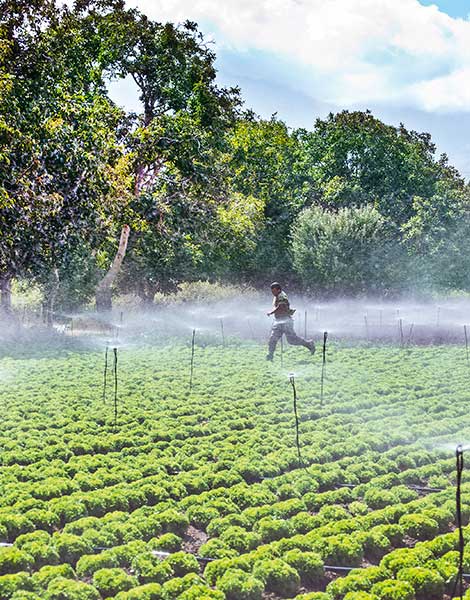
© Clairy Moustafellou
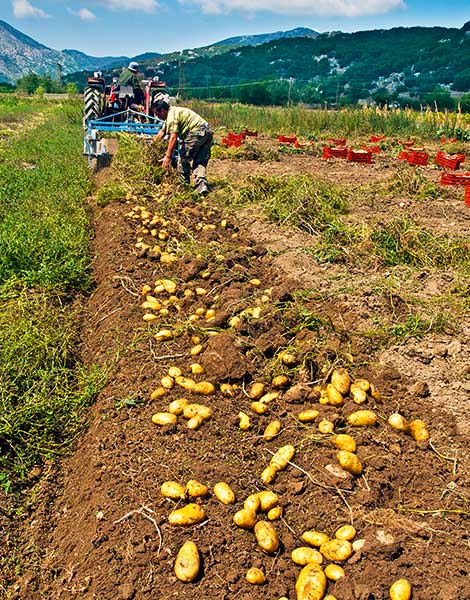
© Clairy Moustafellou
One of my encounters was with a family outside a house in Aghios Georgios. They were readying a harvest of green beans to be sent to one of the farmers’ markets in Irakleio. The Lasithi Plateau is famed for its agricultural produce, which, along with tourism, is one of the staples of the local economy.
And although I was on my bicycle and in the middle of what is considered a “must-do” ride, cycling along the regional road that connects the villages of the plateau, I found the chance to get to know a traditional family of Lasithi too tempting.
I stopped and we started talking about the old days, when the plateau was full of thousands of windmills, which drew water from underground sources to irrigate the crops. Imagine that! Of the 12,000 active in the 1970s, only 150 were still operational in 2000. The rest were abandoned to the ravages of time, gradually replaced by modern pumping systems.
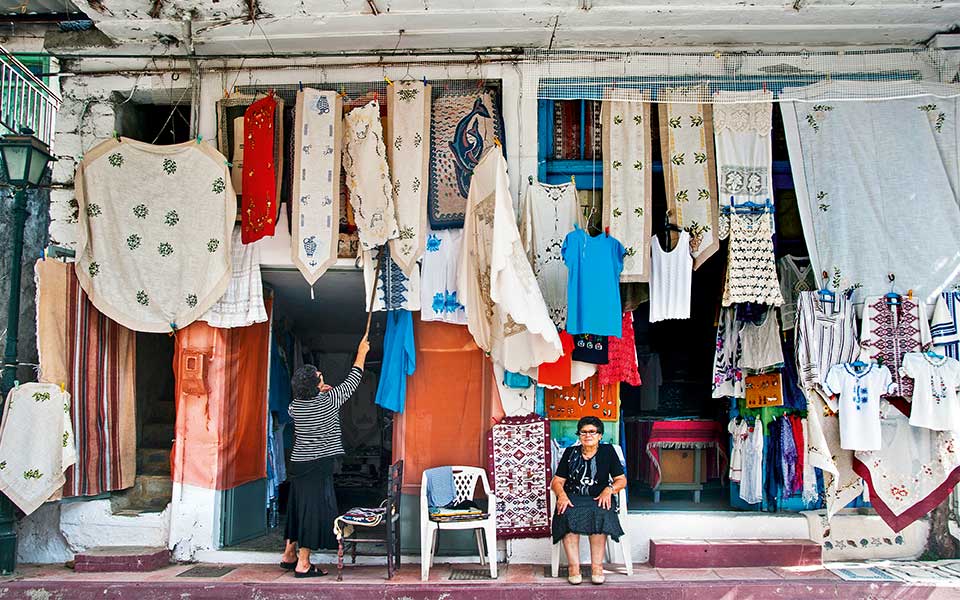
© Clairy Moustafellou
Today, however, both official agencies and the residents themselves wish to bring this wind farm back to life. In fact, the first redesigned windmill has already been presented; its function is to produce energy rather than pump water, but its appearance remains faithful to the traditional windmills. The ultimate goal is to install such windmills across the entire plateau, in order to secure its energy autonomy.
The family I met outside Aghios Georgios will be thrilled to see the valley of the plateau as it once was, full of elegant white windmills. Eleni and Dimitris too, will be glad to see the old tradition renewed, and to watch as the plateau once again becomes a “field ready to take flight.”
I even think Xenios Zeus would want the same.

